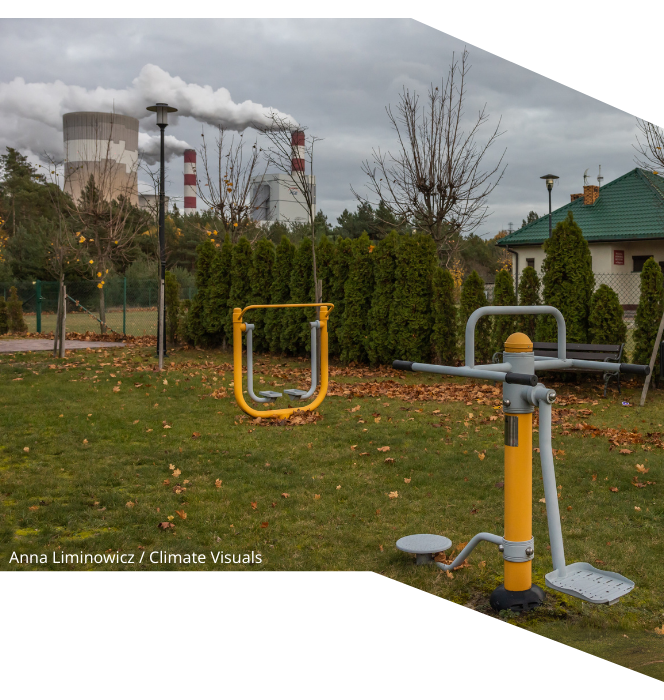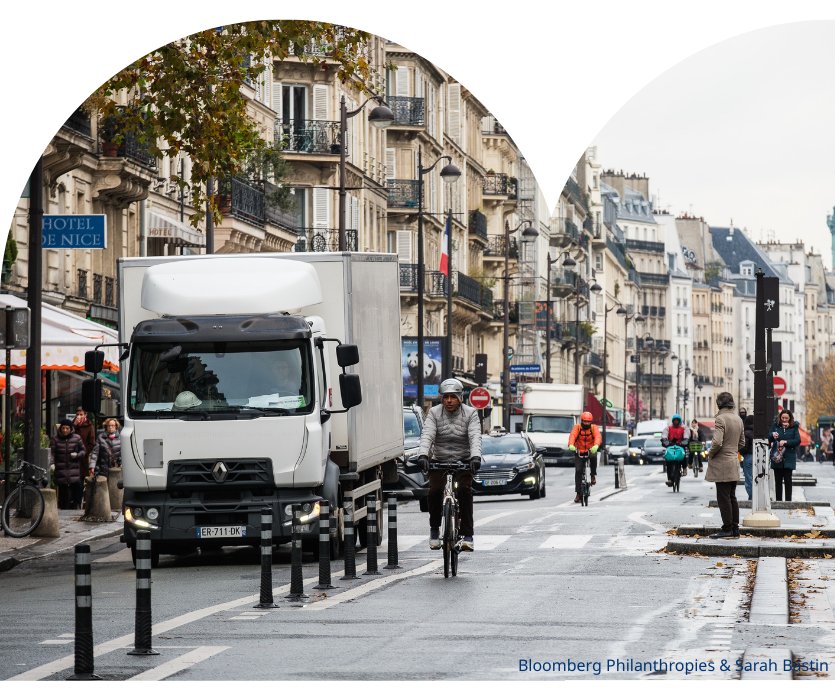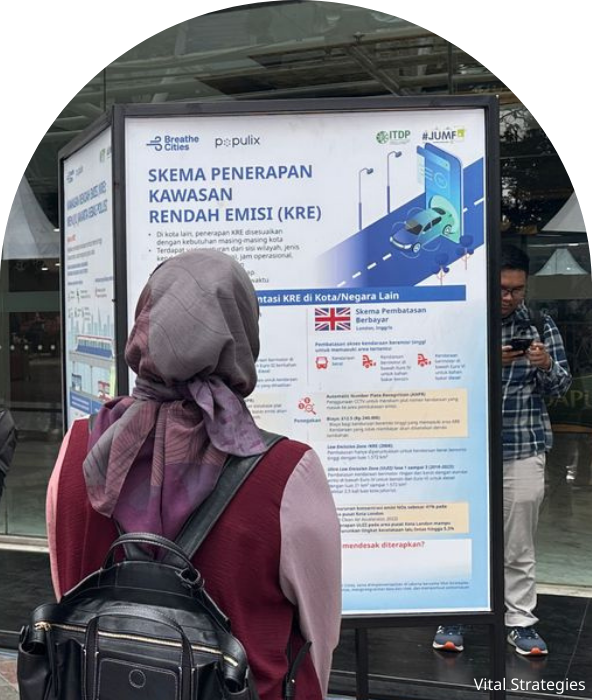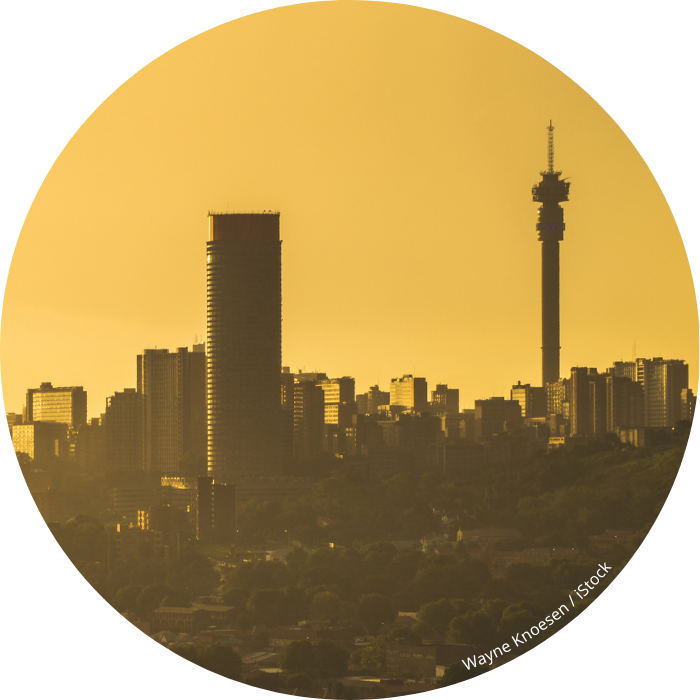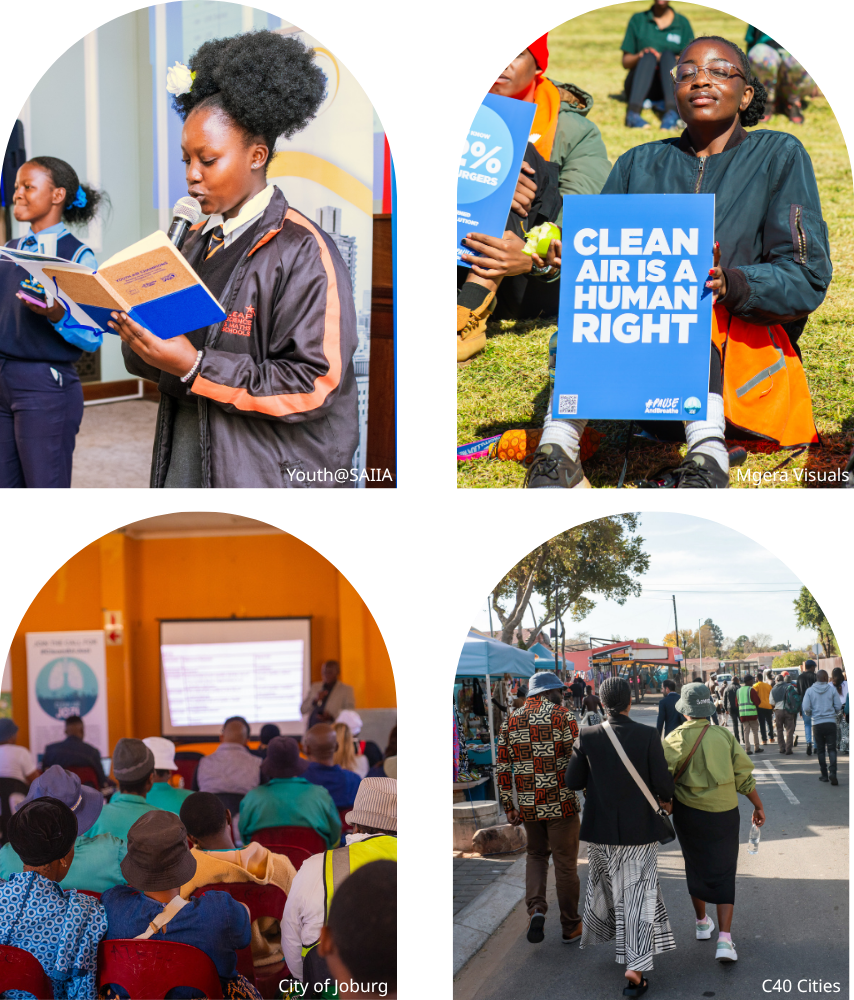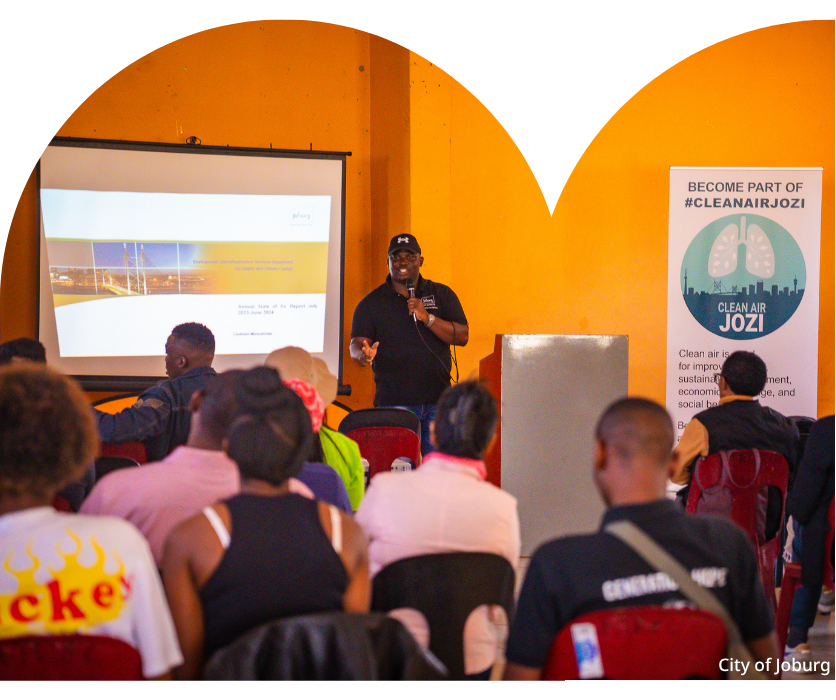Clean air action in cities
An opportunity for communities to thrive
Air pollution affects us all, but not to the same degree. From London to Jakarta, the people who contribute the least to air pollution are often the most exposed and worst affected. By collaborating with city leaders and communities, Breathe Cities is working to turn the challenge of air pollution into an opportunity to build healthier, thriving cities for all.



Unlocking benefits
from clean air action
While almost everyone on the planet breathes polluted air, some urban residents are disproportionally harmed by it. People are affected differently based on factors like their age, gender, disability, or race; if they have existing health issues; how much money they have; the type of job they do; whether they have access to information about air pollution and how to protect themselves; the type of home they have; or where they live or work in a city.
It’s estimated that 716 million of the world’s lowest-income people live in areas with unsafe levels of air pollution. In many cities, low-income groups tend to live and work closer to industrial and traffic-congested areas or outdoors, where exposure to unhealthy air is highest. They are also less likely to have access to affordable healthcare when it makes them ill and less able to deal with the financial strain of missing work.
In our efforts to clean the air, we can improve quality of life and support communities to thrive. Clean air action can be a pathway to reduce the health burden on those less able to afford healthcare costs, offering new job opportunities, increased access to green spaces, better services, information, community networks and collective action. By identifying where clean air action can unlock the greatest opportunities, we can deliver meaningful change where it matters most.
The number of people living in cities is on the rise, with two thirds of the world’s population expected to live in urban areas by 2050. This makes them perfect spaces to roll out fairer solutions for clean air and ensure billions of people experience the many benefits this can bring.

Solutions to ensure
clean air for all
Improving air quality is essential to make our cities cleaner places where people can thrive. It’s crucial that the perspectives and voices of communities that are more exposed to air pollution are included in efforts to clean the air. Sometimes, even well-intentioned solutions don’t achieve their full potential if they don’t reflect the realities lived by communities across a city.
But the good news is that, by ensuring all voices are heard and different groups of residents’ needs are considered when designing, rolling out and monitoring the impact of clean air solutions, cities can ensure the benefits are felt across different communities and that solutions are supported and sustainable.
The opportunities to support thriving communities through clean air action include making homes healthier and boosting residents’ wellbeing as well as increasing access to safer, more sustainable transport for all and making urban spaces more accessible for children, the elderly or those with physical disabilities. Clean air action can also create green jobs and build skills for new or transitioning workers that are currently employed in polluting industries – by electrifying public transport or improving how waste is managed.
Clean air, healthy and thriving communities:
Opportunities for city leadership
From making cities easier to navigate to supporting fair green jobs, our report reveals how cities can take action for clean air and build healthy neighbourhoods for communities to thrive in. This introductory resource for city government policymakers is available in English, Spanish, French, Brazilian Portuguese, Indonesian Bahasa and Thai.

